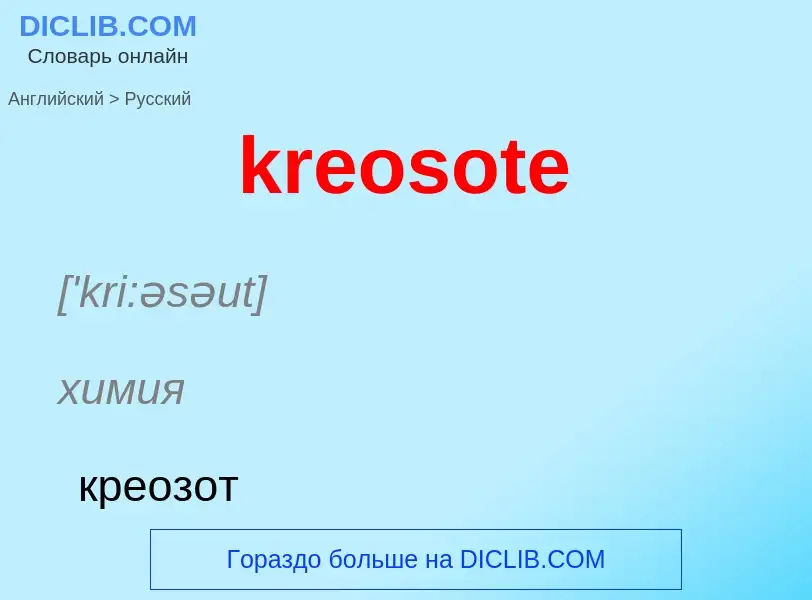Traducción y análisis de palabras por inteligencia artificial
En esta página puede obtener un análisis detallado de una palabra o frase, producido utilizando la mejor tecnología de inteligencia artificial hasta la fecha:
- cómo se usa la palabra
- frecuencia de uso
- se utiliza con más frecuencia en el habla oral o escrita
- opciones de traducción
- ejemplos de uso (varias frases con traducción)
- etimología
kreosote - traducción al ruso
['kri:əsəut]
химия
креозот
существительное
химия
креозот
общая лексика
пропитка креозотом
Wikipedia

Creosote is a category of carbonaceous chemicals formed by the distillation of various tars and pyrolysis of plant-derived material, such as wood, or fossil fuel. They are typically used as preservatives or antiseptics.
Some creosote types were used historically as a treatment for components of seagoing and outdoor wood structures to prevent rot (e.g., bridgework and railroad ties, see image). Samples may be found commonly inside chimney flues, where the coal or wood burns under variable conditions, producing soot and tarry smoke. Creosotes are the principal chemicals responsible for the stability, scent, and flavor characteristic of smoked meat; the name is derived from Greek κρέας (kreas) 'meat', and σωτήρ (sōtēr) 'preserver'.
The two main kinds recognized in industry are coal-tar creosote and wood-tar creosote. The coal-tar variety, having stronger and more toxic properties, has chiefly been used as a preservative for wood; coal-tar creosote was also formerly used as an escharotic, to burn malignant skin tissue, and in dentistry, to prevent necrosis, before its carcinogenic properties became known. The wood-tar variety has been used for meat preservation, ship treatment, and such medical purposes as an anaesthetic, antiseptic, astringent, expectorant, and laxative, though these have mostly been replaced by modern formulations.
Varieties of creosote have also been made from both oil shale and petroleum, and are known as oil-tar creosote when derived from oil tar, and as water-gas-tar creosote when derived from the tar of water gas. Creosote also has been made from pre-coal formations such as lignite, yielding lignite-tar creosote, and peat, yielding peat-tar creosote.


![Bishop Berkeley]] by [[John Smybert]], 1727 Bishop Berkeley]] by [[John Smybert]], 1727](https://commons.wikimedia.org/wiki/Special:FilePath/John Smibert - Bishop George Berkeley - Google Art Project.jpg?width=200)





.jpg?width=200)
